Corn price in Pakistan start from 2,700 Rs to 3,500 Rs per 40 Kg. If we calculate the corn price per 100 kg, then its price starts from 6,750 Rs to 8,500 Rs. In Pakistan’s every city, corn prices change daily. That’s why farmers are facing many more difficulties. Now every farmer in Pakistan will be able to know about the corn price in Pakistan. Now Kissan Shop will update regularly corn rate in Pakistan. The price of corn has a significant impact on both farmers and consumers alike. In this blog, we will describe the factors influencing corn price in Pakistan and understand their implications.
Maize Rate Today in Punjab per 40 KG
The maize rate today in Punjab is between 2,700 and 3,500 Rs. In the below table, two prices are given: the first price for average corn and the second for top-quality corn. The price of corn is booming these days.
| District / City | Minimum Rate Per 40 KG | Maximum Rate Per 40 KG |
|---|---|---|
| ???? Punjab Province | ||
| Arifwala | 2,850 PKR | 3,270 PKR |
| Bahawalpur | 2,700 PKR | 3,260 PKR |
| Bahawalnagar | 2,700 PKR | 3,250 PKR |
| Burewala | 2,850 PKR | 3,340 PKR |
| Chichawatni | 2,800 PKR | 3,420 PKR |
| Chishtian | 2,600 PKR | 3,230 PKR |
| Chowk Azam | 2,730 PKR | 3,260 PKR |
| Dunyapur | 2,800 PKR | 3,350 PKR |
| Dera Ismail Khan | 2,720 PKR | 3,200 PKR |
| Faisalabad | 2,830 PKR | 3,250 PKR |
| Gojra | 2,800 PKR | 3,430 PKR |
| Gujrawala | 2,800 PKR | 3,230 PKR |
| Hasilpur | 2,800 PKR | 3,470 PKR |
| Jhung | 2,850 PKR | 3,140 PKR |
| Kehror Pacca | 2,800 PKR | 3,420 PKR |
| Khanewal | 2,700 PKR | 3,120 PKR |
| Mian Channu | 2,700 PKR | 3,350 PKR |
| Multan | 2,900 PKR | 3,450 PKR |
| Melsi | 2,900 PKR | 3,350 PKR |
| Okara | 2,800 PKR | 3,180 PKR |
| Pak Pattan | 2,850 PKR | 3,200 PKR |
| Pattoki | 2,900 PKR | 3,100 PKR |
| Rahim Yar Khan | 2,830 PKR | 3,120 PKR |
| Sahiwal | 2,700 PKR | 3,920 PKR |
| Sheikhupura | 2,530 PKR | 3,950 PKR |
| Toba Tek Singh | 2,800 PKR | 3,250 PKR |
| Vehari | 2,700 PKR | 3,130 PKR |
Corn Price Today in KPK
The current price of corn in KPK starts from 2,700 to 3,050 Rs per 40 kg. The price of maize in KPK is slightly higher than in Punjab.
| District / City | Minimum Rate Per 40 KG | Maximum Rate Per 40 KG |
|---|---|---|
| ???? KPK Province | ||
| Bunner | 3,100 PKR | 3,400 PKR |
| Peshawar | 3,100 PKR | 3,450 PKR |
Corn Price Today in Sindh
Today the corn price in Sindh starts from 3,000 to 3,600 Rs per 40 kg. Corn prices were very low at the beginning of the season. But now it’s boosting.
| District / City | Minimum Rate Per 40 KG | Maximum Rate Per 40 KG |
|---|---|---|
| ???? Sindh Province | ||
| Khairpur | 3,150 PKR | 3,570 PKR |
| Sukkur | 3,200 PKR | 3,450 PKR |
Check Also:
- ???? Today Cotton Price in Pakistan 2025 ( Click Here )
- ???? Today Wheat Price in Pakistan 2025 ( Click Here )
- ???? Today Rice Price in Pakistan 2025
- ???? Garlic Growing Stages
- ???? Today Garlic Rate in Pakistan
- Today Fertilizer Price in Pakistan
Today maize rate in Feed Factory
Today, the maize rate in factories is between 3,300 and 3,550 Rs per 40 kg. Corn is used in factories to make feed and make oil. Due to the shortage of maize, the price of maize is also rising in the factories.
| Feed Factory Name | Price Per 40 Kg |
|---|---|
| Chairman | 3,400 PKR |
| Kashmir | 3,490 PKR |
| Lahore | 3,460 PKR |
| Olampia | 3,425 PKR |
| Hitech | 3,400 PKR |
| Dasaan | 3,450 PKR |
| Mukhtar | 3,490 PKR |
| National | 3,450 PKR |
| Rafhan | 3,400 PKR |
| Shadab | 3,400 PKR |
| Asia Multan | 3,400 PKR |
| Asia Okara | 3,450 PKR |
| Asia Bhai Pheru | 3,400 PKR |
Market Strategies about Corn Price in Pakistan?
In recent times, Corn Price in Pakistan today has experienced a noticeable drop, leaving many farmers and consumers wondering about the reasons behind this significant decline. In this blog, we will delve into the factors that have led to the decrease in corn price in Pakistan, explaining the situation in simple terms for everyone to understand.
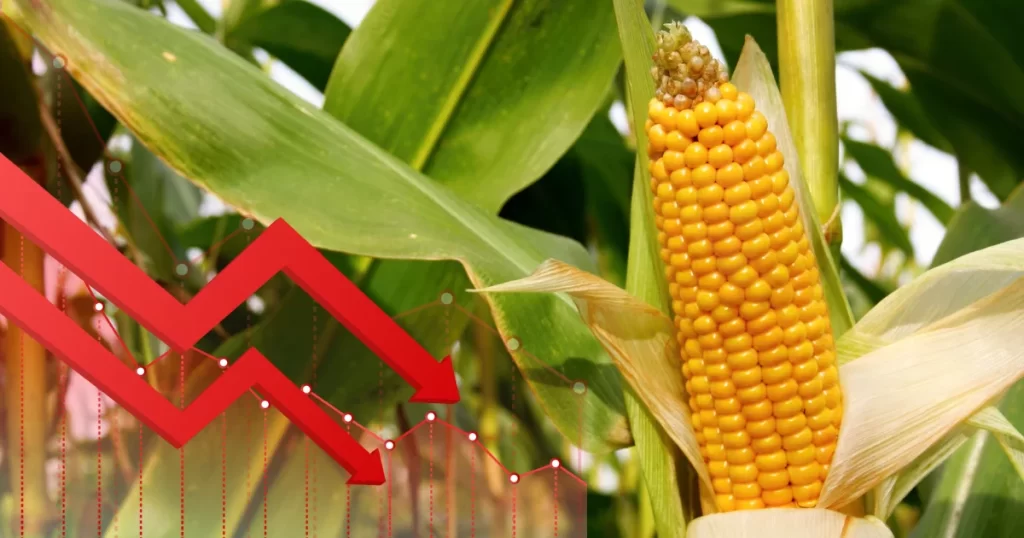
1) Supply and Demand Dynamics
One of the primary reasons for the downward trend in corn prices is the interplay between supply and demand. When the supply of corn surpasses the demand for it, prices tend to drop. Various factors can influence this delicate balance:
a) Increased Corn Production:
An abundant corn harvest due to favorable weather conditions and improved agricultural practices can lead to a surplus of corn in the market.
b) Changing Consumption Patterns:
Shifts in consumer preferences or the availability of alternative food sources might decrease the demand for corn-based products.
2) International Market Impact
Corn prices are not only influenced by local factors but also by the global market. Pakistan is not isolated from the world economy, and international events can have a significant impact on local prices. For instance:
a) Global Corn Production:
If major corn-producing countries experience bumper harvests, they may export more corn to Pakistan, leading to increased supply and lower prices.
b) Trade Policies:
Changes in trade policies or international trade agreements can also affect the flow of corn into Pakistan, influencing local prices.
3) Government Policies and Subsidies
Government policies play a crucial role in the agricultural sector. Subsidies, tariffs, and other incentives provided by the government can impact corn prices:
a) Subsidies on Imports:
If the government allows subsidized imports of corn or corn-based products, it can lead to increased supply and reduced local prices.
b) Support for Farmers:
On the other hand, government support to local corn farmers, such as subsidies for seeds or fertilizers, might increase production, leading to a surplus and driving prices down. When corn price in Pakistan low then the government should be provide subsidies.
4) Storage and Distribution Challenges
Inefficient storage and distribution infrastructure can also contribute to falling corn price in Pakistan:
a) Post-Harvest Losses:
Inadequate storage facilities can result in post-harvest losses, leading to oversupply and lower price.
b) Transportation Difficulties:
Poor transportation networks can hinder the movement of corn from surplus regions to deficit regions, leading to price disparities.
How can be improve Corn Price in Pakistan ?
Improving corn price in Pakistan is a complex task that requires a holistic approach involving various stakeholders, including the government, farmers, traders, and the private sector. We will delve into the factors affecting corn price in Pakistan and explore effective strategies to improve them.
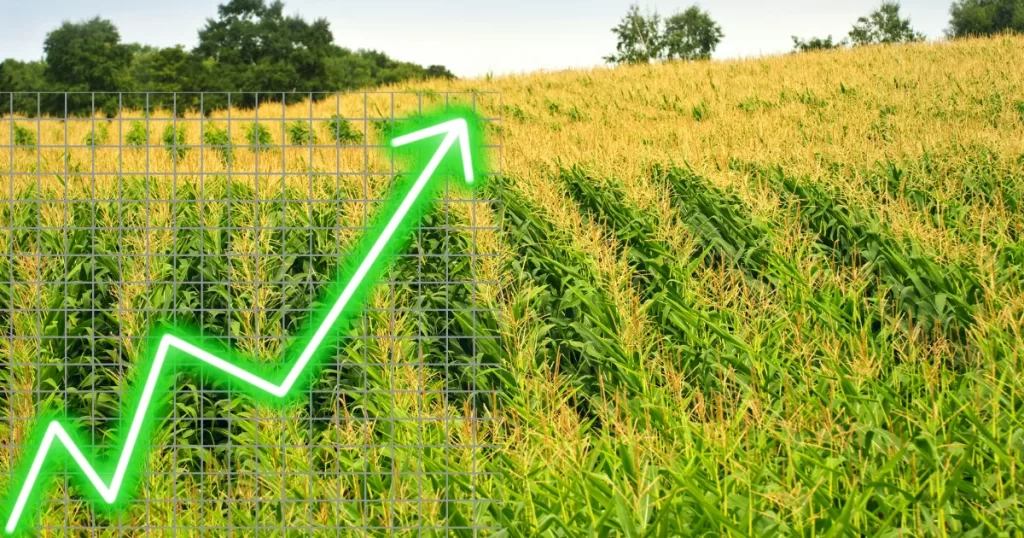
1) Investment in Agricultural Infrastructure:
Enhancing the agricultural infrastructure, including irrigation systems, storage facilities, and transportation networks, can increase productivity and reduce post-harvest losses. This will ensure a steady supply of corn to the market, stabilizing corn price in Pakistan.
2) Promoting Research and Technology Adoption:
Encouraging farmers to adopt modern farming practices and technology can improve corn yields and lower production costs. Government and private sector collaboration in research and development can lead to the introduction of high-yield, drought-resistant corn varieties.
3) Weather Forecasting and Risk Management:
Implementing effective weather forecasting systems can help farmers plan their activities better, minimizing weather-related risks. Moreover, promoting crop insurance and other risk management tools can protect farmers from unforeseen losses.
4) Market Information Systems:
Establishing reliable and accessible market information systems can enable farmers to make informed decisions on when and where to sell their produce. This transparency can foster competitive pricing in the market.
5) Supportive Government Policies:
The government can play a crucial role in stabilizing corn prices through well-designed policies. Timely import and export decisions, subsidies on inputs, and price stabilization mechanisms can effectively manage supply-demand imbalances.
6) Promotion of Crop Diversification:
Encouraging crop diversification can ease the pressure on corn production and help reduce the demand-supply gap. Incentivizing the cultivation of alternative crops can lead to more balanced markets.
7) Capacity Building and Farmer Training:
Investing in farmer education and capacity building can empower them with the knowledge and skills needed to increase their productivity and income. Then farmers will know how can to improve corn price in Pakistan.
Importance of corn price in Pakistan for farmers, consumers, and policymakers
Corn price in Pakistan very important for farmers, consumers and policymakers. Corn is one of the world’s most vital agricultural commodities, playing a critical role in the global food and feed supply chains, as well as the biofuel industry. The understanding of corn prices holds immense importance for various stakeholders, including farmers, consumers, and policymakers. This essay explores the significance of comprehending corn price in Pakistan and its implications on these key groups.
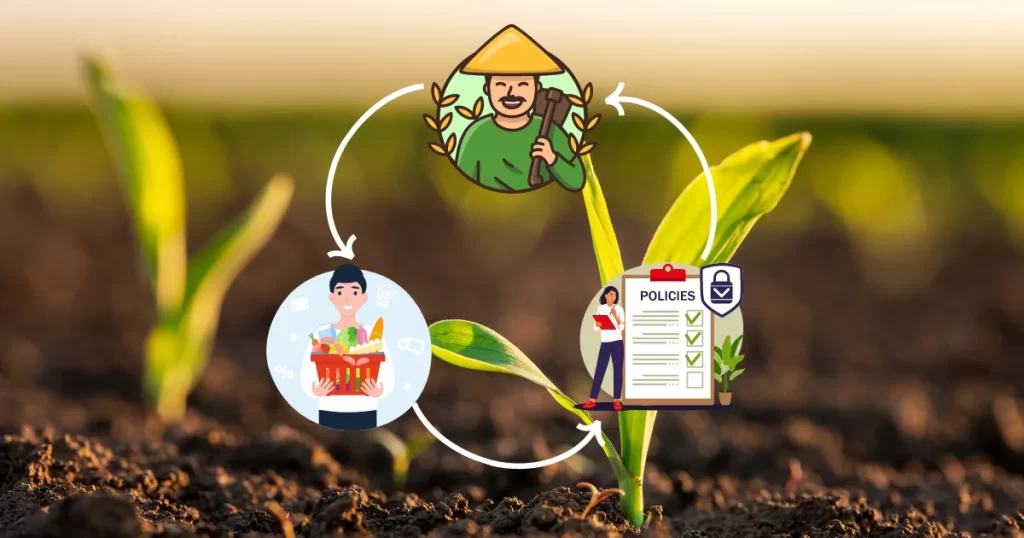
1) Importance of Maize rate today for Farmers:
a) Profitability and Decision-Making: For farmers, corn prices significantly impact their profitability and viability. A clear understanding of market prices helps farmers make informed decisions regarding planting, selling, and storing their corn crops.
b) Risk Management: Fluctuations in corn price in Pakistan expose farmers to financial risks. Being aware of price trends allows them to adopt risk management strategies such as hedging or forward contracting to safeguard against potential losses.
c) Resource Allocation: Understanding corn prices aids farmers in optimizing resource allocation, ensuring they can efficiently allocate land, labor, and capital to maximize yields and returns.
2) Importance of Maize rate today for Consumers
a) Food Prices and Inflation: Corn is a key ingredient in numerous food products, including cereals, sweeteners, and livestock feed. Changes in corn prices directly impact food prices, contributing to inflationary pressures and affecting consumers’ purchasing power.
b) Nutritional Accessibility: Low-income consumers, in particular, heavily rely on corn-based products for their nutritional needs. Price fluctuations can affect the affordability and accessibility of such essential food items for vulnerable populations.
c) Food Security: A stable and predictable corn market is essential for ensuring food security at both national and global levels. Understanding corn price in Pakistan helps policymakers anticipate potential shortages and implement measures to mitigate food crises.
3) Importance of Maize rate today for Policymakers
a) Agricultural Policies: Policymakers need to comprehend corn prices to formulate effective agricultural policies. These policies can promote sustainable farming practices, support farmers during price downturns, and ensure a stable food supply.
b) Trade and Exports: Corn is a major agricultural commodity traded internationally. Policymakers must stay informed about global corn prices to navigate trade agreements and export-import dynamics effectively.
c) Energy and Biofuels: Corn is also a primary source for ethanol production, used in the biofuel industry. Policymakers need to understand corn prices to make informed decisions about renewable energy incentives and sustainable energy policies.
5 Different Types of Corn Varieties
There are five types of corn: Dent Corn, Sweet Corn, Flint Corn, Popcorn and High-Yielding Hybrid Varieties. Corn price in Pakistan is changes as corn variety.
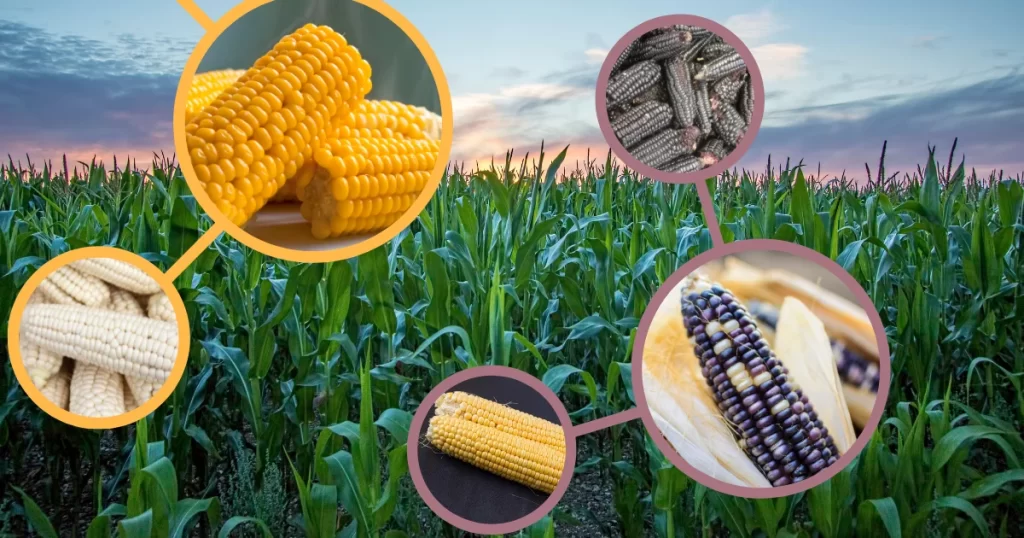
1. Dent Corn
Dent corn, also called field corn, is the most widely cultivated type of corn, and it is primarily used for animal feed, industrial products, and biofuels. The name “dent corn” originates from the indentation that forms on the kernel’s crown as it dries. This variety has high yields due to its remarkable adaptability to various climates and growing conditions. It is commonly grown in the United States, China, Brazil, and Argentina, among other countries.
2. Sweet Corn
Sweet corn is the type that finds its way into our plates as a delicious and tender vegetable. Its high sugar content makes it a favorite for human consumption. Although sweet corn yields are typically lower compared to dent corn, advancements in hybridization and cultivation techniques have significantly increased their productivity. Sweet corn is highly sensitive to frost and requires well-drained, fertile soils for optimal growth.
3. Flint Corn
Flint corn, also known as Indian corn, is characterized by its hard, colorful kernels. Primarily used for decorative purposes, flint corn has also been used historically by indigenous communities for food and ceremonial rituals. Flint corn can withstand harsh growing conditions, such as drought and poor soil, and can be found in various colors, including red, blue, purple, and yellow.
4. Popcorn
Who doesn’t love the aroma of freshly popped popcorn? Popcorn is a unique type of corn known for its small, hard kernels that “pop” when exposed to heat. While popcorn’s yield is relatively low compared to other corn varieties, its popularity in the global snack industry makes it economically valuable. The United States is a major producer of popcorn, catering to the world’s growing demand for this delightful treat. The type of Popcorn, this corn price in Pakistan is slightly higher due to it’s taste.
5. High-Yielding Hybrid Varieties
Over the years, agricultural research and technological advancements have led to the development of high-yielding hybrid corn varieties. These hybrids are the result of crossbreeding two different corn lines, combining desirable traits from each parent to create superior plants. High-yielding hybrids have significantly contributed to increasing corn production and ensuring global food security.
Importance of Corn in Pakistan’s Agricultural sector
Corn holds significant importance in Pakistan’s agricultural sector, playing a vital role in the country’s economy and food security. Let’s explore the key aspects that highlight the importance of corn in Pakistan:
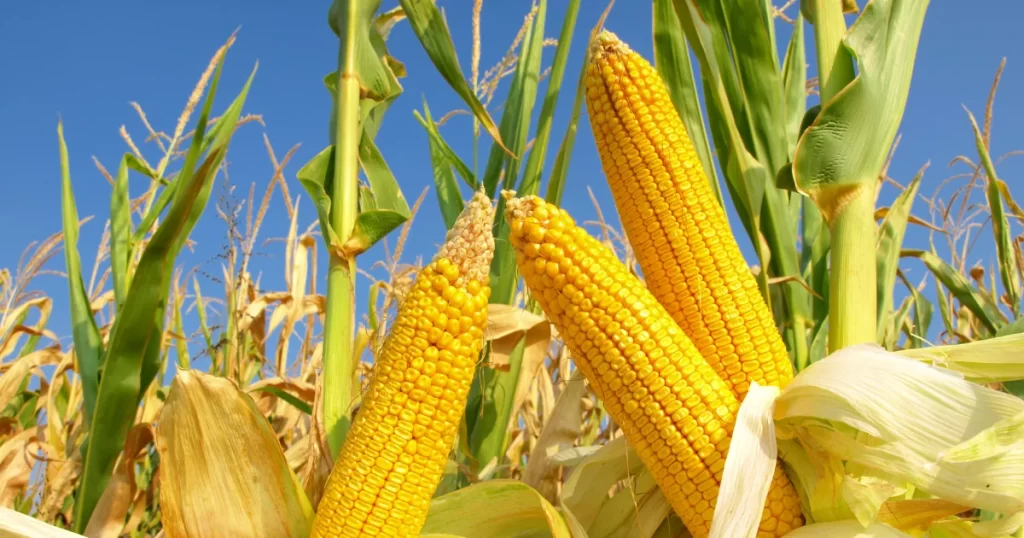
1. Staple Food Crop:
Corn is one of the primary staple food crops in Pakistan, particularly in rural areas. It serves as a major dietary component for a large segment of the population. In regions where rice and wheat are less affordable or less available, corn provides an essential source of calories, carbohydrates, and nutrients.
2. Livestock Feed:
Pakistan has a substantial livestock industry, including poultry, dairy, and cattle farming. Corn is a crucial feed component for these animals due to its high energy and protein content. The growth and productivity of the livestock sector heavily rely on a consistent and affordable supply of corn.
3. Crop Rotation and Soil Health:
Corn is an excellent rotational crop, helping to break disease cycles and improve soil health. Its deep-rooted system aids in breaking up compacted soil and enhances soil structure, allowing better water and nutrient retention. This benefits subsequent crops, leading to sustainable agricultural practices.
4. Diverse Uses and Value Addition:
Apart from being a food and feed crop, corn has diverse uses in Pakistan. It serves as a raw material for various industries, including the production of corn oil, corn starch, corn syrup, and corn-based snacks. Value addition through processing creates opportunities for farmers and agribusinesses to expand their income streams.
5. Employment Generation:
Corn cultivation and its associated value chain activities contribute significantly to rural employment. From sowing to harvesting, processing, and marketing, corn-related activities provide livelihood opportunities for a large number of people in rural areas.
6. Export Potential:
Pakistan’s corn production surplus allows for export opportunities. As international demand for corn increases, Pakistan can capitalize on this potential and boost its agricultural exports, contributing positively to the overall economy.
7. Climate Resilience:
Corn is relatively more resilient to adverse weather conditions compared to other crops like wheat and rice. It can withstand periods of drought and requires less water for growth. In regions where water availability is a concern, cultivating corn can provide a viable alternative.
8. Income Diversification for Farmers:
Corn cultivation allows farmers to diversify their income sources. By incorporating corn into their cropping systems, farmers can mitigate risks associated with relying solely on a single crop and achieve a more balanced and stable income stream.
9. Research and Innovation:
The focus on corn cultivation encourages investment in research and innovation to improve crop varieties, develop drought-resistant hybrids, and enhance overall crop productivity. Such advancements not only benefit corn but also contribute to agricultural development as a whole.
How we can take High Yield from Maize crop in Pakistan ?
If corn price in Pakistan not high but we are successful to take high yield from maize crop then farmer can be earn enough money. Farmers benefits totally depend on yield and price. Following these point farmer can take high yield from maize.
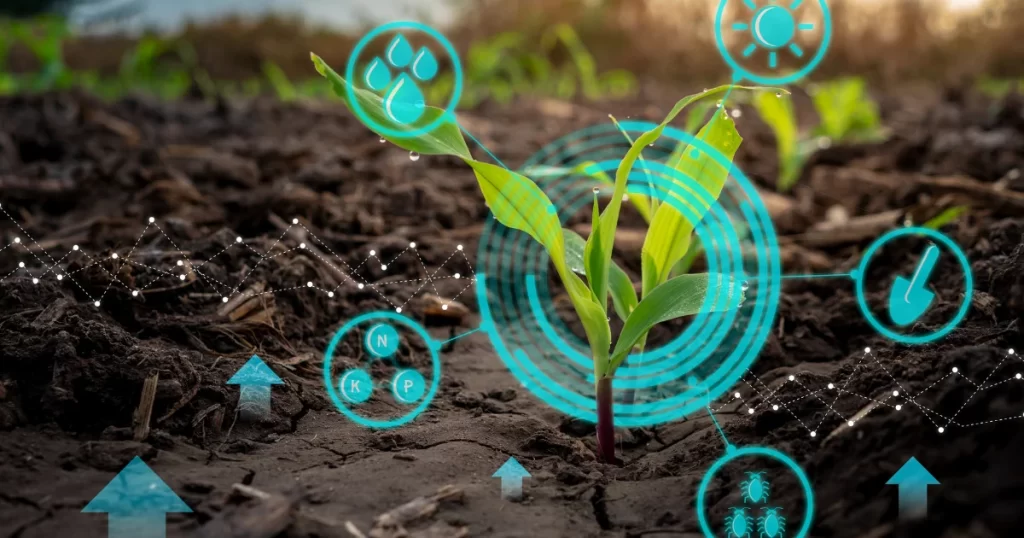
1) Soil Preparation and Fertility Management:
Before planting maize, it is essential to prepare the soil adequately. Conduct a soil test to determine nutrient deficiencies and pH levels. Based on the results, apply appropriate fertilizers and organic matter to improve soil fertility. Regularly monitor soil nutrient levels throughout the growing season and make necessary adjustments to ensure optimum nutrient availability for the crop.
2) Selecting Suitable Varieties:
Choose maize varieties that are well-adapted to the local agro-climatic conditions in Pakistan. Some varieties may be more resistant to pests and diseases prevalent in specific regions, while others might be better suited for drought-prone areas. Consult local agricultural experts or extension officers to make informed decisions regarding variety selection. Every corn variety’s Yield is different, and the corn price in Pakistan also depends on its variety.
3) Timely Planting:
The timing of maize planting plays a crucial role in determining yield. Aim to plant maize when the soil temperature reaches an optimal level (around 15-18°C) for germination. Early planting allows the crop to take advantage of favorable growing conditions and gives it a head start before potential pest pressures or adverse weather conditions set in.
4) Adequate Water Management:
Maize is sensitive to water stress, particularly during critical growth stages. Implement efficient irrigation practices like drip or sprinkler irrigation to provide a steady and appropriate water supply to the plants. Proper water management not only supports optimal growth but also helps in avoiding waterlogging, which can be detrimental to the crop.
5) Weed and Pest Management:
Weed competition can significantly reduce maize yield, so timely and effective weed control is crucial. Use appropriate herbicides or adopt mechanical methods to manage weeds. Additionally, monitor the crop regularly for signs of pests and diseases and take necessary actions promptly to prevent significant damage.
6) Implementing Crop Rotation:
Crop rotation is an effective practice to break pest and disease cycles, improve soil health, and enhance maize yields. Rotate maize with leguminous crops or cereals to maintain soil fertility and minimize the buildup of pathogens and pests specific to maize.
7) Optimizing Plant Density:
Plant density can impact maize yield significantly. Adequate spacing between plants allows for better light penetration and airflow, reducing the risk of diseases and facilitating uniform ear development. However, planting too densely may lead to competition for nutrients and limit individual plant growth. Experiment with plant densities suitable for your specific region and variety.
8) Balanced Nutrient Application:
Maize has specific nutrient requirements at different growth stages. Provide a balanced nutrient application schedule, ensuring adequate supplies of nitrogen, phosphorus, potassium, and other essential elements. Over-fertilization should be avoided as it can lead to nutrient imbalances and environmental pollution.
9) Post-Harvest Management:
Proper post-harvest management is vital to preserve maize quality and minimize losses. Dry the harvested maize to the appropriate moisture level for safe storage and consider using improved storage methods to protect the crop from pests and mold. If moisture in corn increases, then corn price in Pakistan will not be good.
Major cities in Pakistan where cultivated Maize Crop
Maize (corn) is one of the major crops grown in Pakistan, and it is cultivated in various regions across the country. Some of the major cities and regions where maize is grown include:
- Lahore, Punjab
- Faisalabad, Punjab
- Lodhran, Punjab
- Multan, Punjab
- Sahiwal, Punjab
- Gujranwala, Punjab
- Hyderabad, Sindh
- Sukkur, Sindh
- Larkana, Sindh
- Karachi, Sindh
- Peshawar, Khyber Pakhtunkhwa
- Mardan, Khyber Pakhtunkhwa
- Swat, Khyber Pakhtunkhwa
- Quetta, Balochistan
- Zhob, Balochistan
Please note that maize is also grown in many other cities and regions in Pakistan, as it is an important staple crop and widely cultivated throughout the country. The specific regions for maize cultivation might vary depending on factors such as climate, soil type, and agricultural practices. And corn price in Pakistan is different in every city.
Conclusion
In conclusion, the corn price in Pakistan is a significant factor that impacts various stakeholders, including farmers, consumers, and policymakers. Currently, the corn price in Pakistan is low, but understanding the reasons behind this decline is crucial for finding solutions to improve it.
To enhance the corn price in Pakistan, several steps can be taken. First and foremost, the government and agricultural authorities must implement effective policies and support programs to encourage corn cultivation and ensure fair prices for farmers. Additionally, investing in research and development of advanced farming techniques can boost corn production and quality.
The importance of corn in Pakistan’s agricultural sector cannot be overstated. Corn is a vital crop that plays a crucial role in providing food for the population and raw materials for various industries. Its cultivation supports the livelihoods of farmers and contributes to the country’s overall economic growth.
In Pakistan, maize crops are cultivated in several major cities, where the suitable climate and soil conditions favor its growth.

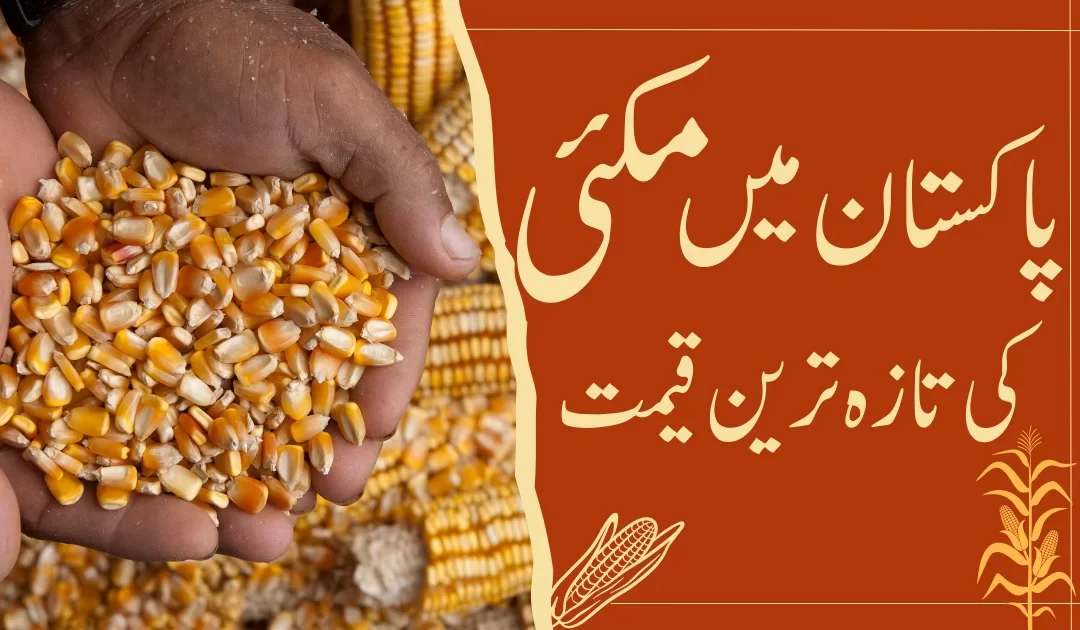
Need every day Update rates about agriculture products
we need yellow corn for human and animal used